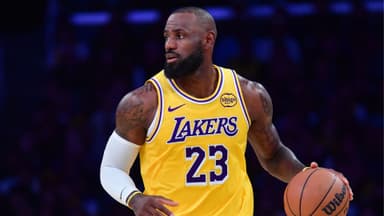LeBron James carried the load solely on his shoulders for seven arduous years on the Cavaliers, trying to lead them to an NBA title without a superstar teammate. In 2010, when he embarked on a new chapter, there were many teams who lined up to convince the forward to join them. One pitch stood out — Miami Heat offering they would pair him with Dwyane Wade and Chris Bosh. It was too enticing for LeBron, who had gotten close to the players during Team USA’s 2008 Beijing Olympics campaign.
Advertisement
LeBron, the reigning two-time MVP at the time, was about to announce the biggest free-agency move in NBA history. Enter former ESPN President John Skipper, who saw the opportunity to cash in on the intrigue through a television show, à la soap opera. They pitched the idea to James’ representatives, who got on board soon enough. The decision to announce The Decision live on TV was made.
The infamous 75-minute special earned the ire of fans who accused LeBron of turning his free agency decision into a circus. However, Skipper believes it was a revolutionary idea and that it was hated only because it was radically different from what the fans were used to. In ESPN analyst Brian Windhorst’s book, LeBron, Inc.: The Making of a Billion-Dollar Athlete, Skipper shared his view about The Decision. He said,
“You know, I thought we were doing something cool, something interesting. I still feel that way to this day. At ESPN we have games, we have news shows, and we have entertainment shows. This was an entertainment show. I personally made the decision to put it on. And in retrospect, I just think it was ahead of its time.”
While there have been a slew of superteams with multiple All-Stars on the roster in the past, most were built by the ingenuity of the front office. James, Wade, and Bosh deciding to team up and handpick a destination to play together was an unprecedented display of player power. It altered the landscape of the sport and how superstars perceived themselves.
The Decision ushered in a new era of player empowerment
After James’ move to Miami in 2010 along with Wade and Bosh, several superstars began leveraging their value and choosing to go where they wanted. The most egregious example of the player power era is Kevin Durant signing with the Warriors in 2016 after they went 73-9 in the regular season and narrowly lost the NBA Finals to James’ Cavaliers.
The 2019 offseason was the epitome of players using their power to decide a franchise’s fate. Kawhi Leonard had the Lakers, Clippers, and Raptors waiting with bated breath for months on his free agency decision.
He eventually signed with the Clippers only after strong-arming them into trading future MVP candidate Shai Gilgeous-Alexander, Danilo Gallinari, and five first-round picks to the Thunder for Paul George.
Durant and Kyrie Irving decided to team up and were reportedly debating whether to join the Knicks or the Nets. The latter won the sweepstakes for the duo and also added veteran center DeAndre Jordan at the superstars’ request.
In the player power era that James ushered in, superstars have the power to pick what team they want to get traded to, even if they have years left on their contracts. James Harden has used it three times in the last three years. He first forced the Rockets to trade him to the Nets so he could team up with Irving and Durant.
A year later, he demanded Brooklyn allow him to join the 76ers before bailing on them to join the Clippers in 2023. While teams had to give up significant draft capital and multiple players each time he moved, the fact that he could pick where he wanted to go highlights how much leverage a player of his caliber holds.
James’ infamous move to Miami in 2010 birthed an era in which teams, their front offices, and coaches cater to the demands of their superstars, rather than the other way around, which was the norm before The Decision.




